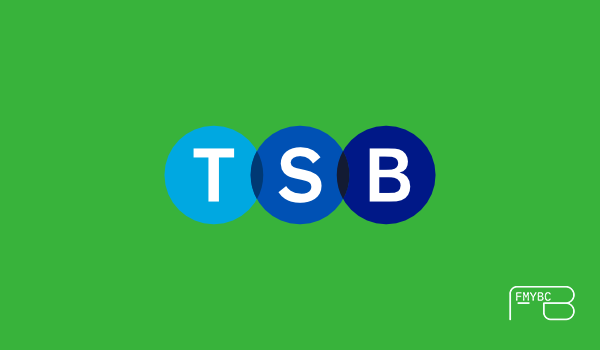
When it comes to borrowing in the UK, the personal loan market is both competitive and confusing. With interest rates shifting in response to Bank of England policy and lenders applying stricter affordability checks, consumers need more than just headline APRs. They need context, practical tips, and a clear understanding of how to maximise value.
The TSB Personal Loan has become a strong contender in 2025, particularly for mid-sized borrowing between £7,500 and £25,000. In this guide, we’ll dive into the application process, answer complex FAQs, reveal insider strategies, and compare TSB with other providers.
Step-by-Step Application Guide
Check your eligibility online
TSB offers a “soft search” eligibility tool that shows whether you’re likely to be approved, without leaving a footprint on your credit file.
Choose the loan amount and term
- Minimum: £1,000 (or £300 for short-term small loans).
- Maximum: £25,000 for new customers, £50,000 for TSB current account holders.
- Term: Between 1–7 years.
Review your personalised APR
Unlike comparison sites that often display generic rates, TSB calculates a personalised offer based on your credit score, income, and borrowing history.
Submit your application
Provide proof of income (payslips, bank statements) and ID documents.
Receive the funds
- Existing TSB customers: same-day transfer (if approved before 6pm).
- Non-customers: funds usually within 2–3 working days.
FAQs You Won’t Usually Find

Does TSB approve self-employed applicants?
Yes, but proof of income such as SA302 forms or HMRC tax returns is required. Expect stricter affordability checks compared to salaried applicants.
Can I top up my TSB loan later?
TSB sometimes allows “top-up loans” where your old loan is settled and a new larger one is issued. However, this resets the APR, which could be higher.
Do repayment holidays affect my credit score?
They don’t mark you as “late” on credit files, but they increase the total interest paid, and lenders can see that you’ve taken breaks. Too many could reduce future creditworthiness.
What happens if I miss a payment?
You’ll incur late payment fees and it will appear on your credit report. TSB recommends contacting them immediately to arrange a temporary plan.
Is it cheaper to overpay monthly instead of early settlement?
Overpayments reduce your balance faster, saving on interest. But full early settlement often gives the largest savings—though TSB can apply up to 58 days’ interest.
Does TSB use open banking for affordability checks?
Increasingly, yes. They may ask for digital consent to review your transaction history, particularly for applicants with thin credit files.
Hacks and Insider Tips
- Borrow slightly above thresholds – Many UK lenders, including TSB, offer their best APR on loans starting at £7,500. A £7,000 loan could cost more in interest than a £7,500 loan.
- Align repayments with payday – Setting your direct debit for just after payday reduces the risk of missed payments.
- Use repayment holidays strategically – Only if you face temporary cashflow issues, as the total cost increases.
- Consolidate debt smartly – Check if early settlement fees from credit cards or other loans outweigh the interest savings from TSB.
- Check competitor pre-approvals – Barclays, Nationwide and Lloyds also offer soft checks. Having multiple quotes before committing often secures a better APR.
Maximising Value from TSB Loan
- For Home Improvements
Borrowing at 5.9% APR to upgrade insulation or heating systems can indirectly save money through lower energy bills, especially with high UK energy prices in 2025. - For Car Purchases
Dealer finance often looks cheaper but hides fees. A TSB loan with fixed monthly repayments gives clearer long-term budgeting. - For Debt Consolidation
Example: rolling £5,000 in credit card debt at 25% APR into a TSB loan at 6% could save over £800 in interest across three years. - For Life Events
Weddings in the UK now average £20,700 (Hitched, 2025 survey). A structured loan avoids reliance on multiple high-interest credit cards.
Alternatives and Complementary Options
- Barclays Personal Loan – Similar range (£1k–£50k), APR from 6.1%, longer max term (8 years).
- Lloyds Bank Loan – APR from 6.4%, slightly higher than TSB.
- Nationwide FlexLoan – Good for existing members; capped rates but stricter eligibility.
- 0% Balance Transfer Credit Cards – Better for smaller debts under £3,000 if repaid within promotional periods.
- Credit Unions – Community-based lending, sometimes cheaper for small loans, though with lower maximums.
Conclusion
The TSB Personal Loan is best suited for mid-range borrowing (£7,500–£25,000), where its APR is among the lowest in the UK. Its speed of disbursement, repayment flexibility, and transparent terms make it attractive to both new and existing customers.Borrowers should weigh the true cost of borrowing, explore competitor quotes, and use strategies like loan “threshold optimisation” to unlock the lowest possible rates. While not ideal for small loans due to the high APR, TSB remains one of the most competitive mainstream lenders for structured borrowing in 2025.



 Complete Guide to Getting a NatWest Personal Loan in 2025 <p style='font-size:14px;'>Your Roadmap to Smarter Borrowing with NatWest</p>
Complete Guide to Getting a NatWest Personal Loan in 2025 <p style='font-size:14px;'>Your Roadmap to Smarter Borrowing with NatWest</p>  Asda Money Personal Loan – Fixed Rates & Quick Approval <p style='font-size:14px;'>The Asda Money Personal Loan can help UK borrowers with fast approval, fair fixed rates, and no hidden fees.</p>
Asda Money Personal Loan – Fixed Rates & Quick Approval <p style='font-size:14px;'>The Asda Money Personal Loan can help UK borrowers with fast approval, fair fixed rates, and no hidden fees.</p>  Ocean Personal Loan – Full Guide for UK <p style='font-size:14px;'>Looking for a hassle-free loan with fixed payments and quick approval? Ocean Personal Loan helps UK borrowers get what they need.</p>
Ocean Personal Loan – Full Guide for UK <p style='font-size:14px;'>Looking for a hassle-free loan with fixed payments and quick approval? Ocean Personal Loan helps UK borrowers get what they need.</p>